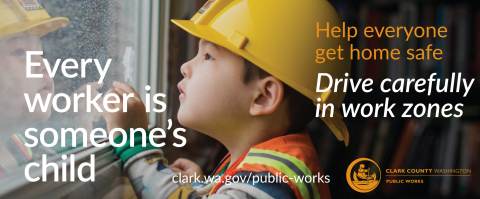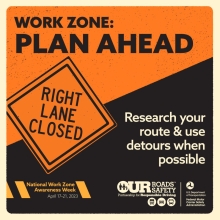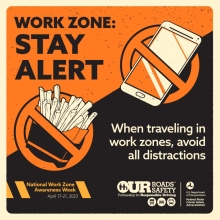“In 2020, 117 workers died in highway work zones across the United States, according to the U.S. Department of Labor, Bureau of Labor Statistics. Each of these workers is a person with family members, friends, and relatives who care deeply about them.” -Seattle Department of Transportation
In early summer 2023, Public Works noticed a startling trend: staff were reporting more close calls (near accidents) while they were in work zones on county roads. Then, a reckless driver struck two workers in a work zone, dragging a Public Works employee and causing them injuries that required a hospital visit.
While anecdotally we were experiencing more risks and incidents on county roads, the national, state and local data shows that traffic collisions, especially in work zones, are on the rise. Between 2020 and 2021, work zone fatalities increased by 10.8% (Federal Highway Administration).
Even one incident, especially one resulting in serious injury or death, is one too many. Each of our staff work hard everyday to provide a safe, efficient road network that enables us to work, play and connect with our community. They deserve to go home to their families at the end of the workday.
Additionally, over 95% of serious injuries and fatalities from work zone collisions are drivers or their passengers. And most serious injury/fatality collisions are on county/city/local roads (not interstates). Driving safely in work zones not only keeps our staff safe, but also keeps you and your loved ones safe.
We are asking for your help to keep workers, fellow motorists, yourself and your passengers safe. Here’s what you can do:
-
Check your route.
-
Before you head out onto the roads, check your route for construction traffic delays. Our webpage is a good starting point, which includes information about delays on county roads and links to construction information for state roads (I-5, I-203, SR-14, SR-500, SR-502, SR-503) and city streets. If there’s construction along your route:
-
Expect delays. Plan to leave early to give yourself more time to reach your destination.
-
Identify an alternative route. Be sure to account for the extra travel time alternative routes might add to your commute.
-
Be patient. Understand that workers in work zones are doing the best they can to keep traffic moving and meet the goals of the construction project. Closures and delays are out of their control as much as they are out of your control.
-
-
-
Drive carefully in work zones.
-
Give space! Following too close is the top reason for work zone collisions in Washington.
-
Slow down! Excessive speed is not only the number two cause of work zone collisions, but it is also the top factor in all fatal road accidents in Clark County between 2013 and 2022 (Washington Traffic Safety Commission).
-
Pay attention and watch for workers! Distracted driving is the number three most common cause of work zone collisions in Washington. Even though traffic may be stopped, it is against the law to hold a handheld electronic device any time you are driving (Washington Traffic Safety Commission).
-
Follow instructions of all signage and flaggers. While it may look like a travel lane is drivable, if it is closed by a flagger or signage, do not enter! You may not see hazards that aren’t well marked or visible, and you may also be endangering workers.
-
-
Remember, traffic fines double in work zones!


